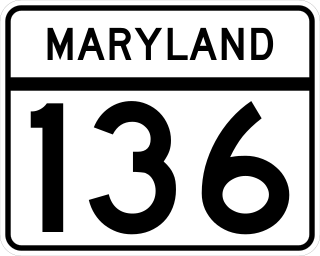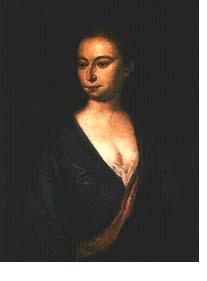
Harford County is located in the U.S. state of Maryland. As of the 2020 census, the population was 260,924. Its county seat is Bel Air. Harford County is included in the Baltimore-Columbia-Towson, MD Metropolitan Statistical Area, which is also included in the Washington-Baltimore-Arlington, DC-MD-VA-WV-PA Combined Statistical Area.

Charles Carroll, known as Charles Carroll of Carrollton or Charles Carroll III, was an Irish-American politician, planter, and signatory of the Declaration of Independence. He was the only Catholic signatory and the last surviving signatory of the Declaration of Independence, dying 56 years after signing the document.

Edmund Pendleton was a Virginia planter, politician, lawyer, and judge. He served in the Virginia legislature before and during the American Revolutionary War, rising to the position of speaker. Pendleton attended the First Continental Congress as one of Virginia's delegates alongside George Washington and Patrick Henry, signed the Continental Association, and led the conventions both wherein Virginia declared independence (1776) and adopted the United States Constitution (1788).

The Mecklenburg Declaration of Independence is a text published in 1819 with the claim that it was the first declaration of independence made in the Thirteen Colonies during the American Revolution. It was supposedly signed on May 20, 1775, in Charlotte, North Carolina, by a committee of citizens of Mecklenburg County, who declared independence from Great Britain after hearing of the battle of Lexington. If the story is true, the Mecklenburg Declaration preceded the United States Declaration of Independence by more than a year. The authenticity of the Mecklenburg Declaration has been disputed since it was published forty-four years after it was reputedly written. There is no verifiable evidence to confirm the original document's existence and no reference to it has been found in extant newspapers from 1775.

Christ Church Burial Ground in Philadelphia is an important early-American cemetery. It is the final resting place of Benjamin Franklin and his wife, Deborah. Four other signers of the Declaration of Independence are buried here, Benjamin Rush, Francis Hopkinson, Joseph Hewes and George Ross. Two more signers are buried at Christ Church just a few blocks away.

Edmund Law was a priest in the Church of England. He served as Master of Peterhouse, Cambridge, as Knightbridge Professor of Philosophy in the University of Cambridge from 1764 to 1769, and as bishop of Carlisle from 1768 to 1787.

John Archer was a prominent physician, and U.S. Congressman from Maryland, representing the sixth district for three terms from 1801–1807. His son, Stevenson Archer and grandson Stevenson Archer II were also Congressmen from Maryland.
The Liberty Point Resolves, also known as "The Cumberland Association", was a resolution signed by fifty residents of Cumberland County, North Carolina, early in the American Revolution.

The Carrollton Viaduct, located over the Gwynns Falls stream near Carroll Park in southwest Baltimore, Maryland, is the first stone masonry bridge for railroad use in the United States, built for the Baltimore and Ohio Railroad, founded 1827, and one of the world's oldest railroad bridges still in use for rail traffic. Construction began in 1828 and was completed in 1829. The bridge is named in honor of Charles Carroll of Carrollton (1737–1832), of Maryland, known for being the last surviving signer of the Declaration of Independence, the only Roman Catholic in the Second Continental Congress (1775–1781), and wealthiest man in the Thirteen Colonies of the time of the American Revolutionary War (1775–1783).
The Gazette, founded in 1727 as The Maryland Gazette, is one of the oldest newspapers in America. Its modern-day descendant, The Capital, was acquired by The Baltimore Sun Media Group in 2014. Previously, it was owned by the Capital Gazette Communications group, which published The Capital, Bowie Blade-News, Crofton-West County Gazette, and Capital Style Magazine.

Lt. Col. Darby Lux II (1737–1795) was an active patriot of the American Revolution. Darby was the son of Capt. Darby Lux I (1695–1750) and Ann Saunders (1700–1785).

Capt. Darby Lux I (1695–1750) was a mariner, merchant, and Justice of Baltimore County, Maryland. The son of an English clergyman, was born in Kenton Parish, Devonshire, England, on June 15, 1695. He was christened on June 30, 1696, in Kenton. Darby immigrated in the early 1720s and settled in Anne Arundel County. He was a mariner by occupation from 1720–1742.

Abingdon is a census-designated place in Harford County, Maryland, United States. It lies 25 miles (40 km) northeast of Baltimore on Maryland Route 7, near the Bush River, between Exits 77 and 80 of Interstate 95.

Maryland Route 22 is a state highway in the U.S. state of Maryland. The state highway runs 12.91 miles (20.78 km) from U.S. Route 1 Business and MD 924 in Bel Air east to an entrance to Aberdeen Proving Ground in Aberdeen. MD 22 is the main connection between the county seat of Bel Air and Aberdeen, which is the largest city in Harford County. The state highway also provides the primary route between Interstate 95 (I-95) and Aberdeen Proving Ground.

The Livingston family of New York is a prominent family that migrated from Scotland to the Dutch Republic, and then to the Province of New York in the 17th century. Descended from the 4th Lord Livingston, its members included signers of the United States Declaration of Independence and the United States Constitution. Several members were Lords of Livingston Manor and Clermont Manor, located along the Hudson River in 18th-century eastern New York. The other two most influential New York dynasties of the 18th and 19th centuries were the Schuyler family and the Clinton family.

Maryland Route 136 is a state highway in the U.S. state of Maryland. The state highway runs 30.04 miles (48.34 km) from MD 7 near Abingdon north to MD 23 in Norrisville. MD 136 is an L-shaped route that connects the communities of Creswell, Churchville, Dublin, and Whiteford in eastern Harford County with each other and with Norrisville in the county's northwestern corner. The state highway is connected to the cities of Aberdeen and Havre de Grace via its connection with MD 22. MD 136 is also linked to the county seat of Bel Air from the east through MD 22, from the northeast by U.S. Route 1, from the north via MD 24, and from the northwest by MD 23. The state highway starts on the coastal plain near the Chesapeake Bay and crosses Harford County's two main tributaries of the Susquehanna River, Deer Creek and Broad Creek, while traversing a wide swath of the Piedmont. MD 136 is the second longest Maryland state highway entirely within one county after MD 235.

William Paca was a Founding Father of the United States who was a signatory to the Continental Association and the United States Declaration of Independence. He was a Maryland delegate to the First Continental Congress and the Second Continental Congress, governor of Maryland, and a district judge of the United States District Court for the District of Maryland.

The signing of the United States Declaration of Independence occurred primarily on August 2, 1776, at the Pennsylvania State House in Philadelphia, later to become known as Independence Hall. The 56 delegates to the Second Continental Congress represented the 13 colonies, 12 of which voted to approve the Declaration of Independence on July 4, 1776. The New York delegation abstained because they had not yet received instructions from Albany to vote for independence. The Declaration proclaimed the signatory colonies were now "free and independent States," no longer colonies of the Kingdom of Great Britain and, thus, no longer a part of the British Empire. The signers’ names are grouped by state, with the exception of John Hancock, as President of the Continental Congress; the states are arranged geographically from south to north, with Button Gwinnett from Georgia first, and Matthew Thornton from New Hampshire last.
Jonathan Remington (1677–1745), was an Associate Justice of Massachusetts Superior Court of Judicature appointed by Gov. Jonathan Belcher. Judge Remington married Lucy Remington Bradstreet (1680–1743), a granddaughter of Gov. Simon Bradstreet. Their daughter Ann Remington was the first wife of William Ellery, a signer of the United States Declaration of Independence.

Hannah Harrison Ludwell Lee was an American colonial heiress and the wife of Colonel Thomas Lee. A granddaughter of Philip Ludwell and Benjamin Harrison II, she was a prominent figure within the American gentry. She grew up at Green Spring Plantation, her family's estate in James City County, and lived a privileged life typical of members of the Virginia planter class. Upon her marriage, she became a member of the Lee family, bringing a large dowry and social prestige to the family. With her dowry, she and her husband built Stratford Hall, the family seat of the Lees.















